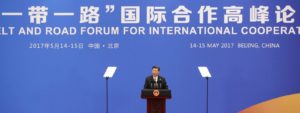Most of Beijing’s unilateral coercive economic measures are aimed at democratic states, according to a new analysis. In part, China uses coercion against these states because bribery, corruption, and positive inducements the regime uses to influence authoritarian states are harder to use against constituencies in a democracy and are less likely to succeed, notes China’s Use of Coercive Economic Measures, a report from the Center for a New American Security.
 Many cases of Chinese coercive economic measures have targeted democratic states. In these cases, China has typically targeted politically influential constituencies, even when the targets have no direct relationship to the policy China seeks to change, note authors Peter Harrell, Elizabeth Rosenberg and Edoardo Saravalle.
Many cases of Chinese coercive economic measures have targeted democratic states. In these cases, China has typically targeted politically influential constituencies, even when the targets have no direct relationship to the policy China seeks to change, note authors Peter Harrell, Elizabeth Rosenberg and Edoardo Saravalle.
For example, China has a long track record of using coercive economic measures against Taiwan, the report adds:
Since the 1990s China has also tried to influence Taiwanese elections and use economic coercion to gain support from Taiwanese business leaders. Beijing recently employed these tools after the election of President Tsa Ing-wen and her pro-independence Democratic Progressive Party. In response to her election, China cut off group tourism to the island. Through a series of diversification initiatives, Taiwan succeeded in replacing the lost Chinese tourists, primarily with visitors from Southeast Asia, though it did not fully replace the revenue lost from Chinese visitors. In addition to the tourism measures, China may have used leverage afforded by the large number of tuition-paying Chinese students in Taiwan to pressure university presidents to issue pro-Beijing statements. In 2018, China complemented its coercion campaign with an aggressive set of economic inducements meant to make the two countries more interdependent and presumably increase Beijing’s leverage over Taipei.







